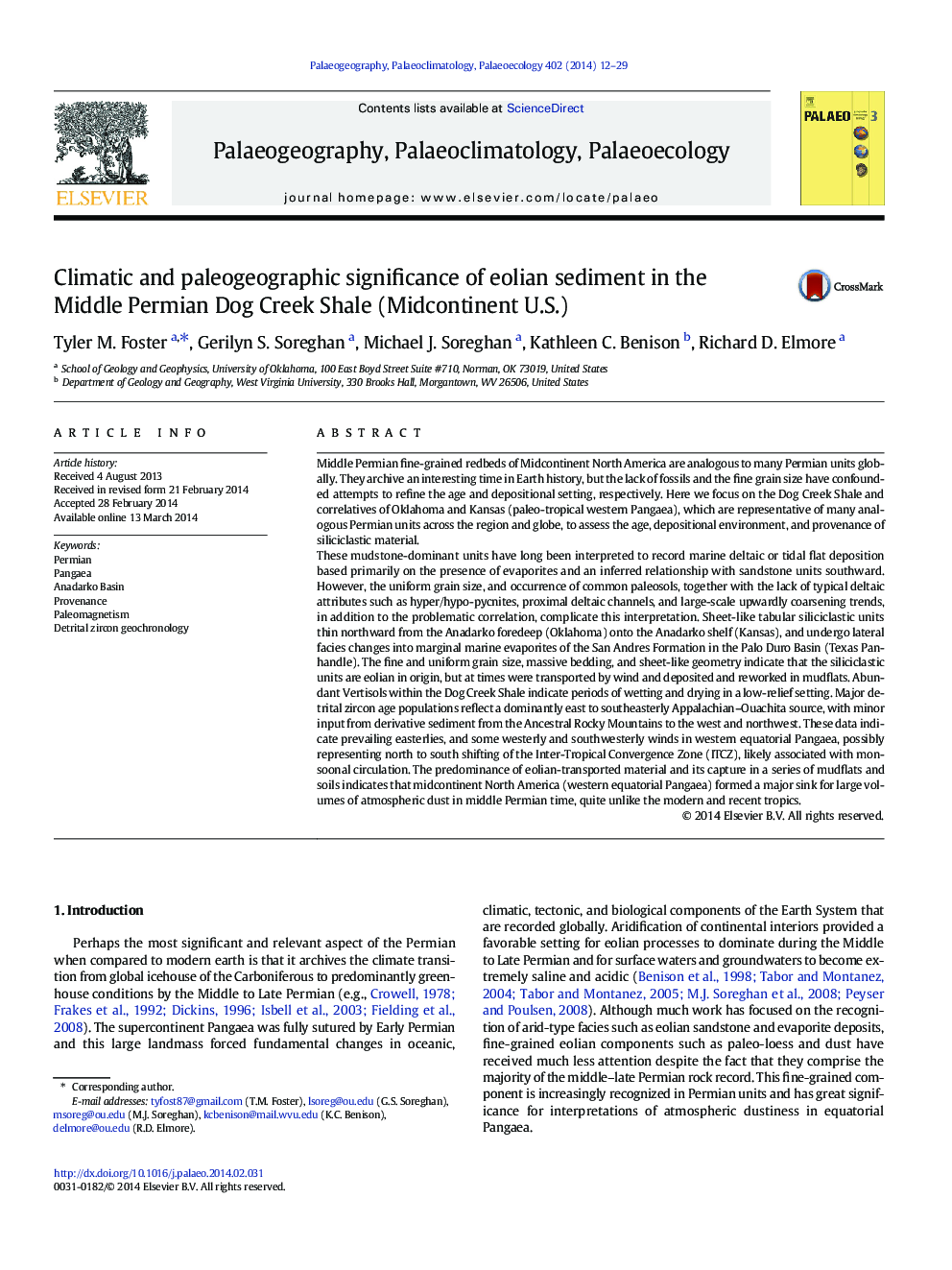| کد مقاله | کد نشریه | سال انتشار | مقاله انگلیسی | نسخه تمام متن |
|---|---|---|---|---|
| 4466260 | 1622188 | 2014 | 18 صفحه PDF | دانلود رایگان |

• We propose a new continental depositional model for the Permian Dog Creek Shale.
• Transport of large volumes of dust in the Midcontinent occurred by eolian action.
• The voluminous silt records atmospheric conditions of the middle Permian.
• New magnetostratigraphic data refine the age and duration of deposition.
Middle Permian fine-grained redbeds of Midcontinent North America are analogous to many Permian units globally. They archive an interesting time in Earth history, but the lack of fossils and the fine grain size have confounded attempts to refine the age and depositional setting, respectively. Here we focus on the Dog Creek Shale and correlatives of Oklahoma and Kansas (paleo-tropical western Pangaea), which are representative of many analogous Permian units across the region and globe, to assess the age, depositional environment, and provenance of siliciclastic material.These mudstone-dominant units have long been interpreted to record marine deltaic or tidal flat deposition based primarily on the presence of evaporites and an inferred relationship with sandstone units southward. However, the uniform grain size, and occurrence of common paleosols, together with the lack of typical deltaic attributes such as hyper/hypo-pycnites, proximal deltaic channels, and large-scale upwardly coarsening trends, in addition to the problematic correlation, complicate this interpretation. Sheet-like tabular siliciclastic units thin northward from the Anadarko foredeep (Oklahoma) onto the Anadarko shelf (Kansas), and undergo lateral facies changes into marginal marine evaporites of the San Andres Formation in the Palo Duro Basin (Texas Panhandle). The fine and uniform grain size, massive bedding, and sheet-like geometry indicate that the siliciclastic units are eolian in origin, but at times were transported by wind and deposited and reworked in mudflats. Abundant Vertisols within the Dog Creek Shale indicate periods of wetting and drying in a low-relief setting. Major detrital zircon age populations reflect a dominantly east to southeasterly Appalachian–Ouachita source, with minor input from derivative sediment from the Ancestral Rocky Mountains to the west and northwest. These data indicate prevailing easterlies, and some westerly and southwesterly winds in western equatorial Pangaea, possibly representing north to south shifting of the Inter-Tropical Convergence Zone (ITCZ), likely associated with monsoonal circulation. The predominance of eolian-transported material and its capture in a series of mudflats and soils indicates that midcontinent North America (western equatorial Pangaea) formed a major sink for large volumes of atmospheric dust in middle Permian time, quite unlike the modern and recent tropics.
Journal: Palaeogeography, Palaeoclimatology, Palaeoecology - Volume 402, 15 May 2014, Pages 12–29